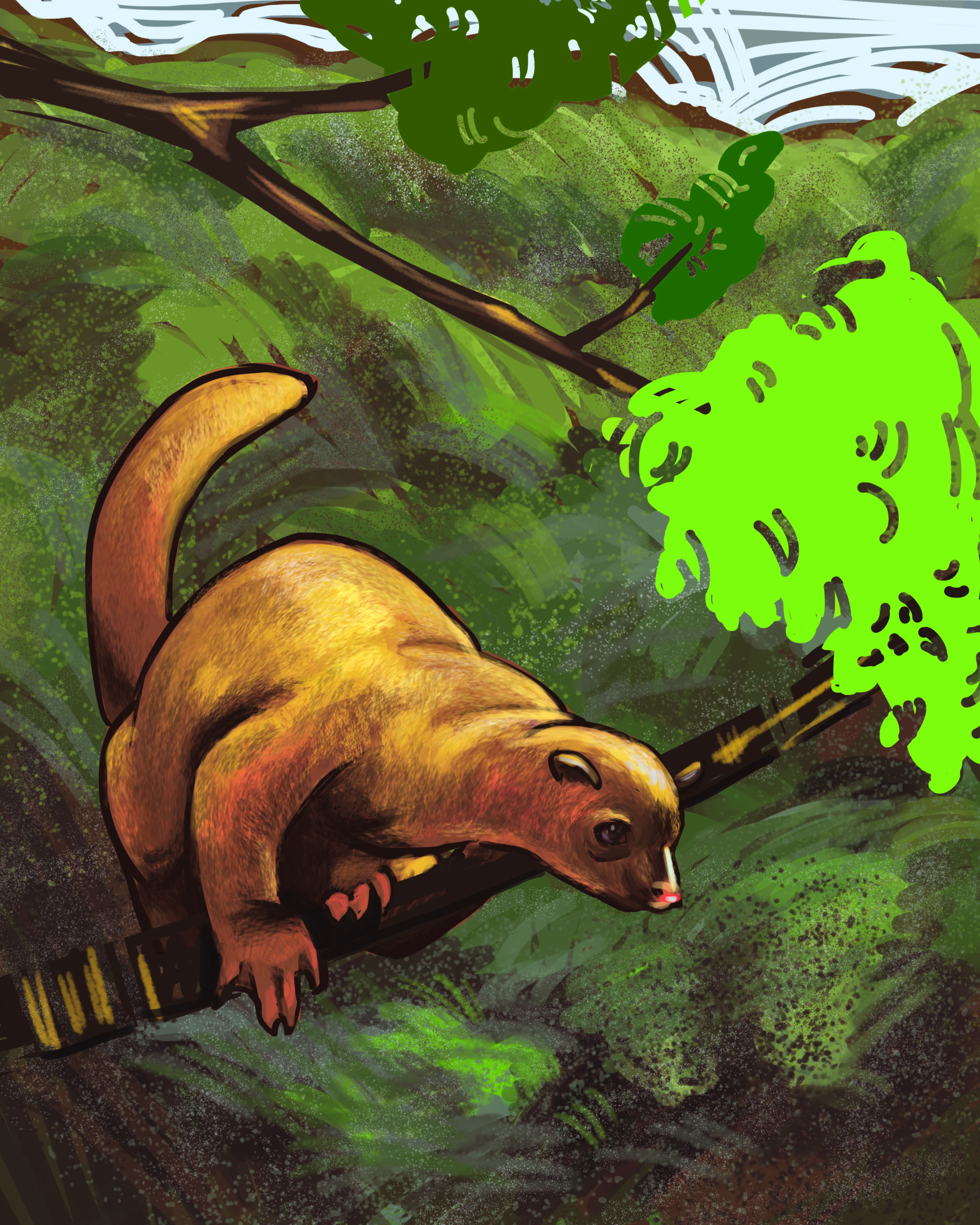Hiding in the Western and Central Andes of Colombia and Ecuador is the most adorable animal that you will ever see. The olinguito is a newly discovered carnivorous mammal that resides in Central and South America. It has been 35 years since the last time a new mammalian species has been found in the Western Hemisphere. The discovery of the olinguito was long overdue.
The olinguito is a furry, red, two-pound mammal that births one offspring at a time. They reside in the foggy Colombian and Ecuadorian cloud forests, which inspired their scientific name, Bassaricyon neblina – “neblina” is the Spanish word for fog. The olinguito is a new species in the order Carnivora, which includes cats, dogs, and bears, and is the smallest member of the family Procyonidae, to which raccoons and kinkajous also belong. New mammalian species are rare to come by, and new carnivorous mammals even more so. The discovery of the olinguito marks the identification of the first new mammalian species in the Americas since the Colombian weasel in 1978.
Evidence of the olinguito’s status as a distinct species was given by Kris Helgen, curator of mammals at the Smithsonian National Museum of Natural History. This work took Helgen and his team of eight scientists 10 years to complete. The project was first conceived by Helgen in 2003 when he found a mislabelled collection of olinguito pelts and skulls in Chicago’s Field Museum of Natural History.
Helgen’s work brought his team to 18 museums to examine more than 90 per cent of the world’s olingo specimens. These specimens were believed to be odd-looking olingos, larger tree-living carnivores that are closely related to olinguitos. Helgen noticed that these odd specimens had smaller teeth, longer fur, and were smaller in size than olingos. The olinguito specimens were found at much higher elevations than those at which olingos usually reside.
The evidence made it apparent to the Helgen team that these specimens were not normal olingos. A sign that olinguitos are not simply odd-looking olingos is the fact that the two do not interbreed. There is evidence of this shown in the field, where the two species live in the same locations in parts of the Andes without interbreeding. In a unique case study, a female olinguito, mistaken for an olingo, which lived in various American zoos from 1967-76, would not breed with male olingos after numerous attempts to encourage it to do so.
Along with anatomical differences, olinguitos were distinguished from olingos by DNA evidence. Blood samples from olingos and olinguitos showed that they share around 90 per cent of their DNA. This was far less than expected, as the two species were thought to be more genetically similar.
The name “olinguito” comes from “olingo” with the Spanish suffix “-ito,” an affectionate ending meaning “little.” A rough translation of olinguito, then, is “adorable little olingo.” Despite being in the taxonomic order Carnivora, olinguitos tend to eat mostly plants. They are nocturnally active animals, foraging for fruit at night. As they are newly discovered, the behaviour of olinguitos is not well understood. They are, however, not aggressive, and appear to be rather shy.
Not only was the olinguito unknown to the scientific community, it was also unknown to the locals of the region. Andeans rarely differentiate between olingos and kinkajous, so distinguishing between olinguitos and olingos likely did not occur. At certain elevations, kinkajous, olingos, and olinguitos can all be present in the same habitats, which can add to the confusion between the three species.
The discovery of the olinguito has caught the attention of the scientific community and lovers of adorable animals alike. By learning more about olinguitos, hopefully scientists and conservationists can protect this newly discovered species.





